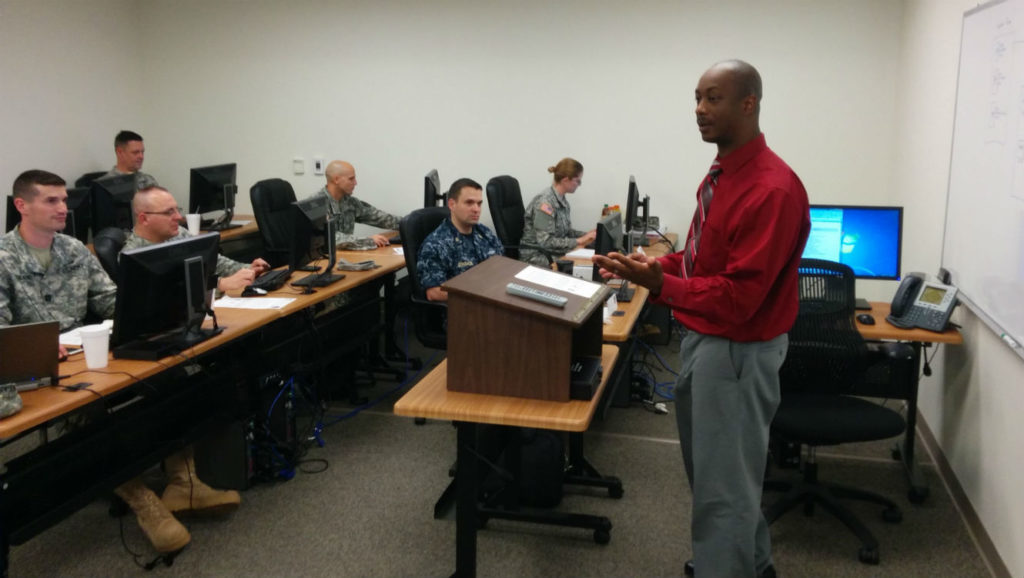A Higher Standard: Communicating Technical Intelligence

What do a cyber analyst, a satellite marketer, a physics professor, and a technical intelligence collector have in common? Well, based on some of the feedback from our previous War on the Rocks article, quite a lot. These professionals shared the challenges they face regarding their ability to effectively communicate scientific and technical information to the policymakers, public, or funding institutions they serve. Some voiced frustration over their ordeals, while others reminisced about their successes. Others requested an immediate answer to solve their problems in the form of new training or a graduate-level course at the National Intelligence University. Regardless of the context or tone of the feedback, empathy for the intelligence officers’ plight was real.
Science and technical intelligence officers, sometimes referred to as “functional” experts in the community, cover and analyze an incredible swath of scientific topics and technical information, from foreign cyber intrusions to emerging military technologies. As technology and its effects become more globalized, the importance of communicating key aspects of the technology and its impact on national security becomes more important. Further, this explication must be provided to a wider audience than the current norm. While it’s crucial for intelligence analysts to offer an assessment, it’s equally important to provide enough detail or context in the report for the consumer to fundamentally understand the underlying concepts and their role in the strategic picture.
In 2007, the Office of the Director of National Intelligence (ODNI) issued Intelligence Community Directive 203, aimed at standardizing analytic tradecraft. Upon close inspection, aspects of this directive can address some of the problems of communicating scientific or technical information. For example, Tradecraft Standard 5 states that intelligence should “demonstrate customer relevance and address implications … Products should add value by addressing prospects, context, threats, or factors affecting opportunities for action” [emphasis added]. The “context” of scientific and technical intelligence includes the science information necessary to understand the issue.
The ODNI updated ICD 203 in 2015 and added Tradecraft Standard 9, which caters to technical information conveyance, if used properly. The standard was initially carved out from aspects of Tradecraft Standard 6 and guides the intelligence community to employ visuals when information and concepts can be conveyed better in graphic form. Many science communication articles emphasize the importance of using visuals and even drafting visual “strategies.” An MIT research scientist offered these statements about the topic in a 2012 article:
“Images are becoming what our society is about”… so it’s becoming more important than ever to get the images right — and that requires understanding, thought and planning…dynamic imaging…is “opening up another door” that can help to convey meaning in ever more engaging ways — if it’s used thoughtfully.
A 2008 article posted on the National Science Foundation’s website describes how undergrads master scientific concepts by explaining them to high schoolers through drawings. The point of the article was to impart the importance of clarifying the underlying information through the visuals to enable understanding. While it’s doubtful that analysts would be allowed to incorporate a personal drawing in an intelligence report, the process might enable the analyst to consider creative visuals that better explain aspects of the technical intelligence to improve the customer’s understanding. Many intelligence agencies already have graphic design offices that work closely with the analysts to depict information. Their positioning, background, and expertise may have a significantly important effect on the technical information conveyed. Each collaborator can work through strategies to address the needs of both the analyst and customer, while also communicating visual information as objectively and ethically as possible — a key tenet for the intelligence community.
While new intelligence courses, products, or tradecraft guides that cater to science and technical intelligence communication take time to internalize, fund, and develop, focusing on strengthening areas that already exist for exploitation may offer a path of least resistance and quicker gains. Scientific and technical intelligence officers must recognize their obligation to consumers of their products. Without providing adequate context for their findings and considering more effective conveyance, they risk missing opportunities to gain new customers and have a greater impact.
Dr. Brian Holmes is a faculty member at the National Intelligence University in Washington, DC. Max Greenlee is a National Intelligence University alumnus. The views expressed in this article are theirs alone and do not imply endorsement by the Defense Intelligence Agency, the Department of Defense, its component organizations, or the U.S. Government.
Image: Youngstown Air Reserve Station
